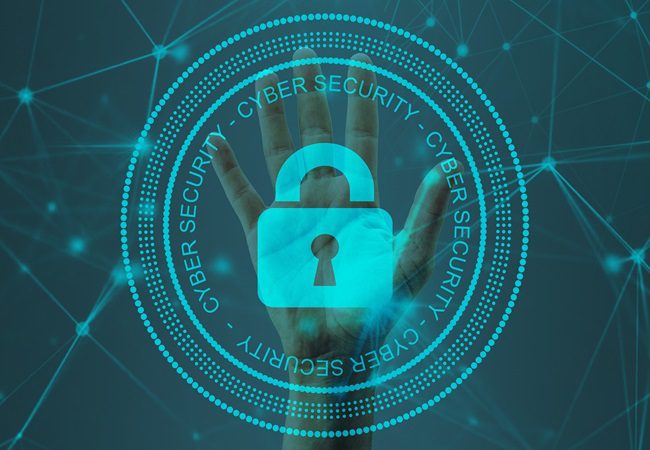Introduction:
In the dynamic landscape of the digital age, the symbiotic relationship between blockchain technology and cybersecurity emerges as a formidable force. As businesses and individuals navigate an increasingly interconnected world, the need for robust cybersecurity measures has never been more critical. In this exploration, we delve into the synergy between blockchain and cybersecurity, understanding how this partnership is reshaping the paradigm of digital defenses.
Understanding the Digital Landscape:
The interconnected nature of today’s digital ecosystem brings unprecedented opportunities but also exposes vulnerabilities. With the proliferation of data breaches, ransomware attacks, and other cyber threats, the imperative to fortify digital defenses has become paramount. Traditional centralized systems, often targeted by malicious actors, demand innovative solutions to mitigate risks and enhance cybersecurity.
Blockchain’s Decentralized Fortress:
Blockchain, a decentralized and distributed ledger technology, presents a paradigm shift in the approach to digital security. Unlike traditional centralized systems, where a single point of failure can lead to catastrophic consequences, blockchain operates on a peer-to-peer network. Each participant in the network holds a copy of the entire ledger, creating a decentralized fortress that is inherently resistant to tampering and attacks.
Transparency and Immutability:
Two key features of blockchain, transparency, and immutability, significantly contribute to bolstering cybersecurity. Transactions recorded on the blockchain are visible to all participants in real-time, creating a transparent and tamper-resistant record. Once a block is added to the chain, it cannot be altered retroactively, ensuring the integrity of the data. This transparency and immutability create a robust foundation for secure and trustworthy digital interactions.
Enhanced Data Integrity:
One of the persistent challenges in cybersecurity is maintaining the integrity of data. Malicious alterations to sensitive information can lead to severe consequences, compromising the trustworthiness of digital systems. Blockchain addresses this challenge by providing a secure and unalterable ledger. Each transaction is cryptographically linked to the previous one, creating a chain of blocks that guarantees the integrity of the data.
Decentralized Identity Management:
Identity theft and unauthorized access remain significant concerns in the realm of cybersecurity. Blockchain introduces decentralized identity management, where individuals have control over their digital identities. This self-sovereign identity model reduces the reliance on centralized databases, minimizing the risk of large-scale data breaches that often result in identity theft.
Securing IoT Devices:
The proliferation of Internet of Things (IoT) devices amplifies the attack surface for cyber threats. Blockchain plays a pivotal role in securing IoT devices by creating a decentralized and secure communication network. Each device in the network can have its unique identity recorded on the blockchain, ensuring authenticated and secure interactions between devices. This not only mitigates the risk of unauthorized access but also enhances the overall cybersecurity posture.
Smart Contracts and Cybersecurity:
Smart contracts, self-executing contracts with the terms directly written into code, leverage blockchain to enhance cybersecurity. By automating and enforcing contract terms through code execution, smart contracts reduce the risk of fraud and ensure the secure execution of agreements. This automation streamlines processes, eliminates intermediaries, and enhances the overall security of digital transactions.
Cryptographic Hash Functions:
Blockchain employs cryptographic hash functions as a fundamental building block for security. Hash functions, such as SHA-256, create a unique and fixed-size string of characters for each block in the blockchain. Any alteration to the data within a block results in a completely different hash, immediately signaling tampering. This cryptographic integrity check fortifies the security of the blockchain against malicious activities.
Challenges and Considerations:
While blockchain holds immense potential for strengthening cybersecurity, it is not without challenges. Integration with existing systems, scalability concerns, and regulatory considerations pose hurdles to widespread adoption. Overcoming these challenges requires collaborative efforts from industry stakeholders, policymakers, and technology innovators to create a conducive environment for the seamless integration of blockchain into cybersecurity frameworks.
The Role of Public and Private Blockchains:
Public and private blockchains offer distinct advantages in the realm of cybersecurity. Public blockchains, like Bitcoin and Ethereum, operate on an open network where anyone can participate. While offering transparency and decentralization, they may not be suitable for sensitive business applications. On the other hand, private blockchains restrict access to authorized participants, providing a more controlled environment for enterprise applications with heightened security requirements.
Blockchain in Threat Intelligence:
The field of threat intelligence, which involves analyzing and understanding cyber threats, benefits significantly from blockchain. Blockchain’s transparency facilitates the sharing of threat intelligence among different entities without compromising the confidentiality of the data. This collaborative approach strengthens the collective defense against evolving cyber threats.
Real-World Applications:
Blockchain’s impact on cybersecurity extends across various industries. In finance, blockchain secures financial transactions, reducing the risk of fraudulent activities. In healthcare, it safeguards sensitive patient data, ensuring privacy and compliance with regulatory standards. Government agencies leverage blockchain to enhance the security and transparency of public records, reducing the risk of tampering and corruption.
Cybersecurity in the Token Economy:
Tokenization, a key concept in blockchain, introduces new dimensions to cybersecurity. Digital tokens, representing ownership or access rights, are secured on the blockchain. This tokenized economy enhances security by eliminating the need for traditional authentication methods, reducing the risk of unauthorized access and identity theft.
The Future Landscape:
As blockchain technology and cybersecurity evolve, their future integration holds promise for even more robust digital defenses. The emergence of quantum-resistant cryptographic algorithms, advancements in consensus mechanisms, and the integration of artificial intelligence with blockchain are shaping the next frontier of cybersecurity.
Conclusion:
The synergy between blockchain and cybersecurity marks a paradigm shift in how we approach digital defenses. Moreover, blockchain’s decentralized architecture, transparency, and cryptographic security offer a robust foundation for mitigating cyber threats. As industries continue to adopt and adapt to this transformative partnership, the collaborative efforts of innovators, regulators, and cybersecurity professionals will be instrumental in navigating a secure digital future. In addition, the interconnected age demands resilient defenses, and blockchain emerges as a beacon, fortifying the foundations of our digital world against the ever-evolving landscape of cyber threats.



































